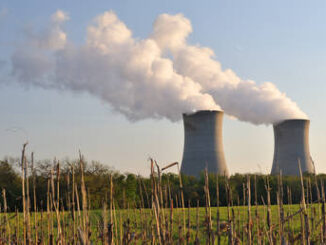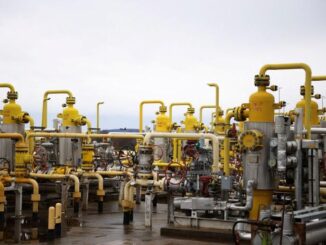
Last week, Brent crude topped $90 per barrel for the first time since last November, and WTI climbed to an 11-month high, too. The reason: Saudi Arabia and Russia said they would extend their oil supply cuts until the end of the year.
The decision was hardly unexpected. What was unexpected was the length of the extension. It suggested that the biggest oil producers in OPEC+ were done playing around. They wanted higher prices, and they were going to get it. With that move, the thread on which U.S.-Saudi relations hang got thinner and frayed.
Last year, as oil and fuel prices soared amid U.S. and EU sanctions on Russia for its invasion of Ukraine, the Biden administration sold close to 200 million barrels of crude from the strategic petroleum reserve to arrest the rally.
It worked, too, not least because it turned out the ample sanctions did not put a dent into Russia’s oil exports, which brought prices down. The White House took the credit. Now, just a year before the next elections, prices are once again up, and the SPR is at a 40-year low. And the Saudis have clearly shown their priorities no longer align with those of their overseas friends.
“The Saudis don’t have a lot of friends in Washington right now. There’s absolutely the risk that they start to become ‘Exhibit A’ if Washington wants to blame someone for high pump prices or a slowing economy again,” Eurasia Group analyst Raad Alkadiri told the Financial Times this month.
Indeed, prices are on the rise. Gasoline prices are up, and although the rise is modest, the very fact of its presence could be cause for concern because gasoline demand declines after Labor Day. What’s worse, however, is that diesel prices have added 40% since May, according to Argus data cited by the Wall Street Journal.
“Diesel is more heavily affected because of the type of crude that’s being taken out of the market,” Alan Gelder, Wood Mackenzie vice president for refining, chemicals, and oil markets, told the WSJ. “Saudi’s oil provides a higher yield for diesel than lighter crude oils. This loss adds further cost to the economy.”
All this is happening as hopes are revived that the United States has a good chance to weather the repercussions of last year’s events and avoid an all-out recession. In a demonstration of those hopes, there have been expectations that the Fed would end its rate hikes later this year.
It now seems that fuel prices will do the job of rate hikes, thanks to the latest Saudi cut extension, which has ignited fears for global supply. Every economy is quite literally fueled by diesel, and with the fuel’s prices up so much, everything else is getting more expensive, too. Eventually, this would lead to lower consumption. Especially if bullish analysts are right and crude moves even higher.
All that would mean more strain for Saudi-U.S. relations and cement the perception that Saudi Arabia is moving in a new direction—in case its acceptance into the BRICS was not clear enough. That strain does not bode well for U.S. energy security in the immediate term. It bodes even less well for Biden’s chances in the 2024 elections, according to the FT.
This, however, may be the smaller problem. Because there are precious few large suppliers of the kind of heavy crude U.S. refineries need to produce more diesel. The list features Russia, Venezuela, and Iran, along with Canada, which should paint a clear picture of why Washington needs to maintain good relations with Riyadh.
First, however, it needs to fix these relations after President Biden blamed the Saudis for last year’s price rally, then threatened them, and then went and fist-bumped Crown Prince Mohammed—a move many observers at the time saw as the last straw for the Saudis.
The even bigger problem for the Biden administration is that this year, they do not have a brimming SPR to use to tame prices at the pump. The reserve is at the lowest in four decades, and the refilling that the White House had promised never took off, even when prices were in the range that the administration wanted.
This means that there is much less wiggle room when it comes to explaining while prices are on the rise. Blaming the Saudis didn’t work the first time, and it will not work this time, either. Neither would blame the Russians—they’ve turned into an overused culprit, which diminishes the effect of every consecutive blame-laying. Besides these two, there are no other convenient targets to take the blame for high prices.
It is once again a tough time for the Biden administration. The Saudis, previously a reliable supplier of crude and a geopolitical ally, are now demonstrating that, as former New Jersey governor Chris Christie put it, “You won’t have a good relationship with us, well, we’ll have a good relationship with Russia.”
The other large suppliers of the heavy crude necessary for the production of diesel are countries under U.S. sanctions, with the notable exception of Canada, whose own federal government isn’t known to be very supportive of the country’s oil industry.
The Biden administration is in a bind, and it won’t be far-fetched to suggest that it is a bind very much of its own making. These are the toughest ones to get out of.
By Irina Slav for Oilprice.com
ENB Top News
ENB
Energy Dashboard
ENB Podcast
ENB Substack



